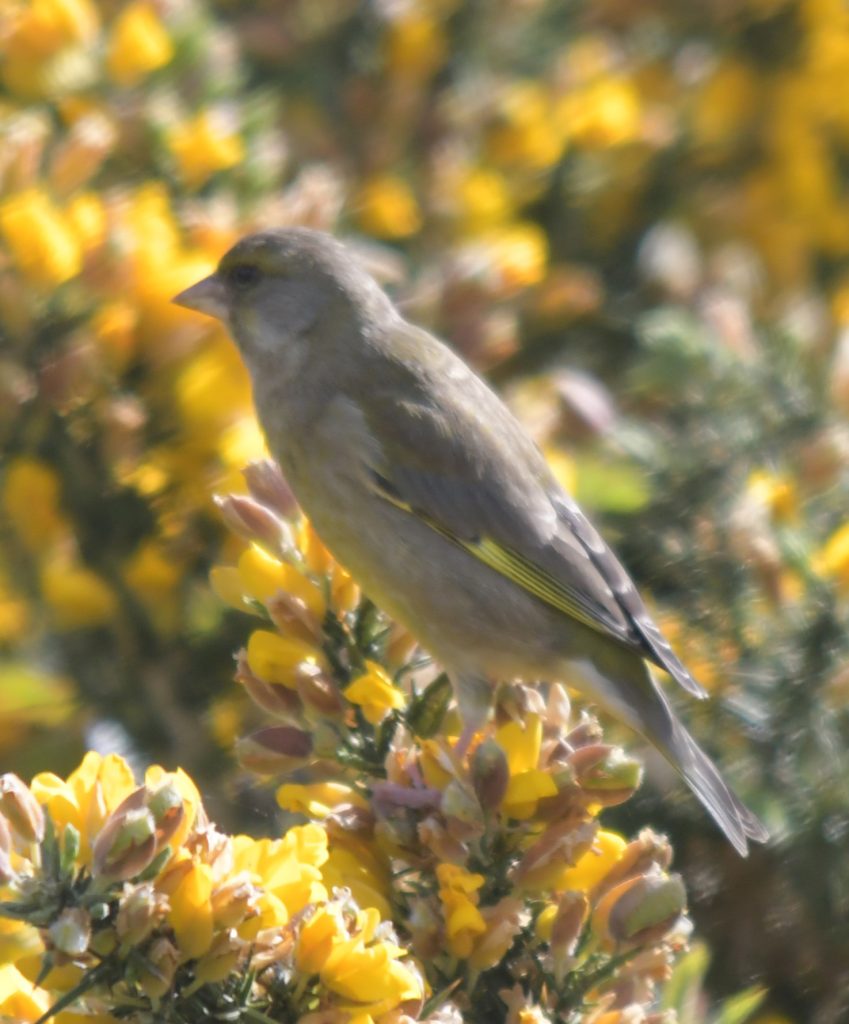Date Published: 02-03-2024
Nature Notes February 2024
One of the wettest and mildest February’s on record.
SIGHTINGS
Birds (seen or heard): Herring Gulls, Black- headed Gulls, Carrion Crows, Magpies, Jays, Buzzards, Sparrowhawk, Tawny Owls, Great Spotted Woodpecker, Wood Pigeons, Stock Doves, Stonechats, Siskins, Nuthatch, Wrens, Goldcrest, Robins, Song Thrushes, Blackbirds, Dunnocks, Blackcaps, Greenfinches, Goldfinches, Chaffinches, Bullfinches, Coal/Blue/Great/Long-tailed Tits.
Mammals: Grey Squirrels, Foxes, Mole activity, Wood Mice.
Plants in flower/berry: Common Gorse, Holly, Ivy.
Insects: Midges, Species of Bees.
Butterflies: Peacock, Brimstone.
NATURE FACT
The Greenfinch is the largest of a trio of British Finches, with partly green plumage. The adult male is a handsome bird with brilliant yellow flashes on the wings and tail, most obvious in flight, and washes of green and greenish yellow over the rest of the plumage. The females and young of each sex are less highly coloured, with much brown streaked plumage. They feed on seeds for almost all of their lives. During Autumn and Winter, they gather into flocks during daytime but choose to roost on their own at night. Their roosting sites are preferably not particularly high but have plenty of thick cover. Nests are built of twigs, roots and moss in late April or early May, and are lined with fine grass, roots, hair, wool or feathers. Four to six eggs are laid in each clutch. Two or three broods are often raised by a single pair and young may sometimes be found in the nest as late as September.
Recorders: C Wilcox K Wilcox
SITE MANAGEMENT
The work party reduced scrub and small trees from the southern edge of the heathland habitat thereby reducing shade from the more important heathland species which are light demanding and low growing. Other dominate species within the nearby woodland were reduced to encourage better diversity of trees over time.

Female Greenfinch Image by K Wilcox




